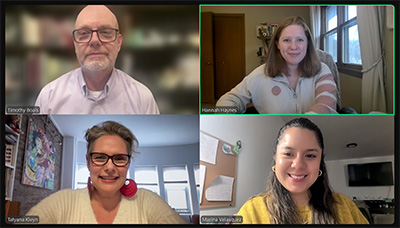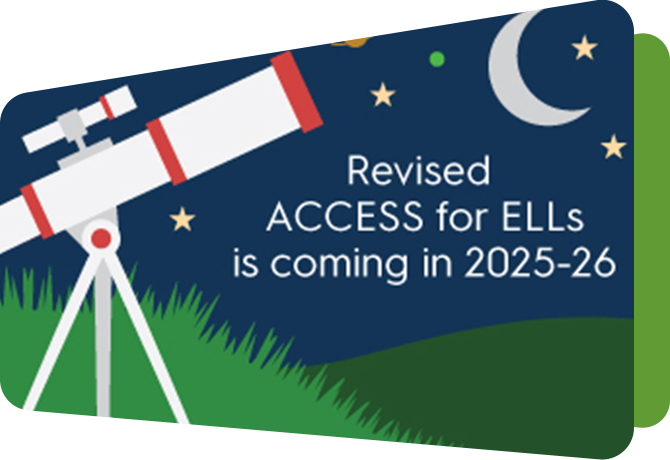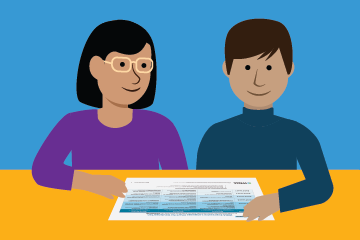A guide to translanguaging in the classroom

By Hannah Haynes
Translanguaging is transforming classrooms, allowing students to harness their full language abilities in learning. The concept is fairly new to mainstream classrooms. So, what exactly is translanguaging, and how can educators integrate it effectively? In this edition of Conversations With Educators, WIDA founder Tim Boals spoke with Marina Velasquez, a third-grade dual language bilingual educator, and Tatyana Kleyn, a professor of bilingual education and TESOL at the City College of New York at CUNY. They share why this pedagogical approach matters and how teachers can implement it in their classrooms.
What Is Translanguaging?
At its core, translanguaging is the natural way multilingual individuals use all their language practices fluidly to communicate, learn and express themselves. It’s not merely about translation or switching named languages; rather, it acknowledges the full linguistic and cultural identities of students.
Marina illustrates the idea with a great example her elementary school student shared at a conference where they co-presented: If an expert in translanguaging who is fluent in English and Spanish were given a test in those two languages, they’d likely excel. But if the test were in German, their expertise on the topic wouldn’t change — just their ability to express it in that language. The same principle applies to students in the classroom. Allowing them to use all their languages and tools ensures they demonstrate their true knowledge.
Why Is Translanguaging Important?
Marina and Tatyana gave several reasons why translanguaging is important:
- Translanguaging enhances learning and comprehension. When students leverage all their language abilities, they are better positioned to grasp new concepts and retain information.
- Translanguaging affirms identities and builds confidence. Encouraging students to use their home languages highlights their cultural and linguistic backgrounds, fostering a sense of belonging.
- Translanguaging encourages critical thinking. Comparing languages and concepts across languages deepens understanding and cognitive flexibility.
- Translanguaging prepares students for a multilingual world. Multilingual learners have advantages in global communication and workforce opportunities.
How to Implement Translanguaging in the Classroom
“We start off the year building bridges between the languages by learning about and identifying cognates,” Marina said. “But also speaking about our traditions, cultures and experiences, which is also part of translanguaging. There’s not one direct explanation of translanguaging. There’s so much that comes into play.”
Marina and Tatyana suggest several ways to bring translanguaging into the classroom:
- Create a welcoming language environment.
- Encourage students to use all their language abilities without fear of correction or restriction.
- Acknowledge and celebrate all languages spoken in the classroom.
- Build bridges between languages.
- Use cognates (similar words across languages) to highlight connections between English and their home languages.
- Compare idioms and expressions across languages to deepen understanding.
- Incorporate multilingual resources.
- Encourage students to use bilingual dictionaries, texts and digital tools.
- Provide content in multiple languages to reinforce learning.
- Have students create personal glossaries with translations and explanations in their home languages.
- Utilize arts and expression.
- Encourage students to write poetry, create music or engage in storytelling using all their languages.
- Use multilingual journals for reflections and creative writing.
- Educate and involve school leadership.
- School leaders must understand and support translanguaging to create a school culture that embraces it.
- Explore professional development to help educators and administrators implement these practices effectively.
Resources to Get Started
Translanguaging is more than a strategy to use in the classroom — it’s a mindset that values and leverages the linguistic assets of all students.
“It’s like the air we breathe,” Tatyana said. “The more that we can expose students to growing their linguistic repertoire and also learning about other languages, the stronger it’s going to make them, and the better prepared they are to be with other people in the world, and to understand people, even if you don’t speak their language.”
Tatyana and Marina met through the CUNY-Initiative on Immigration and Education (CUNY-IIE) when Marina and some of her colleagues helped create a video on welcoming new students into the classroom. In the video, you can see Marina, her colleagues and the students translanguaging.
CUNY-IIE also provides modules for educators on a variety of topics, including one on translanguaging, authored by Professor Maite Sánchez.
In addition to CUNY-IIE, Tatyana has been involved in the CUNY New York State Initiative on Emergent Bilinguals (CUNY-NYSIEB). This initiative has an entire web page on translanguaging resources, and it’s an excellent place to find information on the following:
- Translanguaging guides
- Tips for establishing a leadership team at your school
- Relevant books and resources
If you’re interested in more information about translanguaging, this WIDA Focus Bulletin explores translanguaging from the perspective of four educators, spanning kindergarten through high school. Vea y descargue en español.





